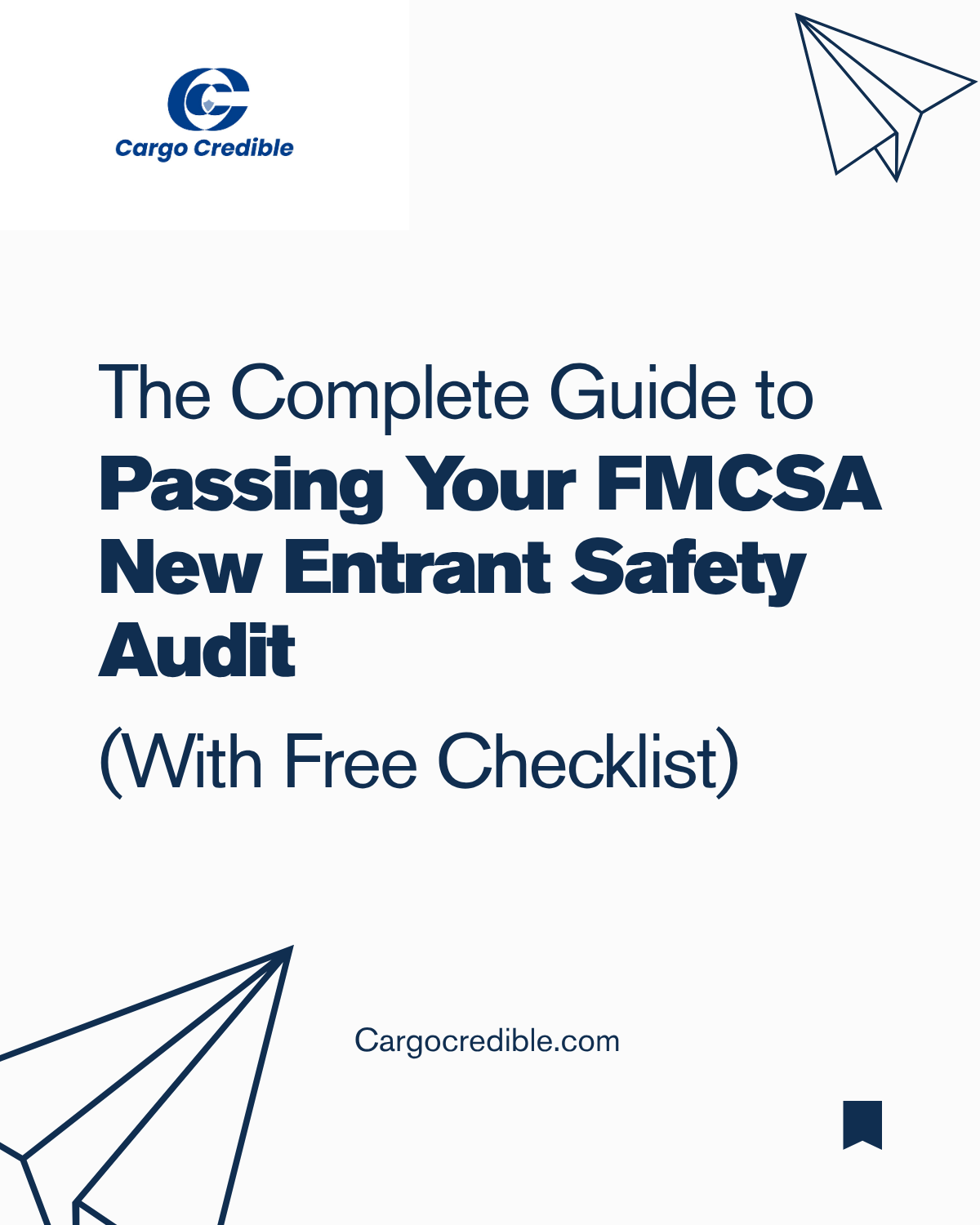The Complete Guide to Passing Your FMCSA New Entrant Safety Audit

Starting your own trucking company is an exciting adventure—but before you hit the open road, there’s one big hurdle to clear: the FMCSA New Entrant Safety Audit.
If the words "FMCSA audit" or "DOT safety audit" make you nervous, don’t worry! This guide will break everything down in plain English, just like explaining it to a friend. We’ll cover what the audit is, why it matters, and—most importantly—give you a step-by-step new entrant checklist to help you pass with confidence.
What Is the FMCSA New Entrant Safety Audit?
When you register your trucking company and get your USDOT number, the Federal Motor Carrier Safety Administration (FMCSA) labels you as a "new entrant."
Within your first 12 months (and sometimes as early as 120 days!), you’ll have to pass a safety audit. Think of it like a driver’s test for your business—they want to make sure you know the rules before giving you full approval.
What Happens If You Don’t Pass?
- Warning & Extra Monitoring – You might get extra inspections until you fix issues.
- Failed Audit – Your DOT authority could be revoked, meaning you can’t operate until you comply.
But here’s the good news: Most failures happen because of paperwork mistakes—not bad driving. If you stay organized, you’ll pass easily!
Why Do So Many New Trucking Companies Fail the Audit?
Surprisingly, most new carriers don’t fail because of unsafe trucks or drivers—they fail because of missing or messy records.
The FMCSA doesn’t expect perfection, but they do expect you to:
- Keep accurate records
- Follow basic safety rules
- Prove you’re running a professional operation
The audit is mostly about documentation, so let’s break down exactly what they check.
What’s Checked During the DOT Safety Audit?
The FMCSA focuses on six key areas:
- Driver Qualifications – Are your drivers properly licensed, medically certified, and trained?
- Vehicle Maintenance – Are your trucks inspected, repaired, and documented correctly?
- Hours of Service (HOS) – Are drivers following logbook rules (paper or ELD)?
- Drug & Alcohol Testing – Do you have a testing program in place?
- Accident Records – Are you tracking any crashes or incidents?
- Hazardous Materials (If Applicable) – Are you handling dangerous goods safely?
Now, let’s dive into the must-have documents for each category.
FMCSA New Entrant Checklist
1. Driver Qualification Files (DQFs)
Every driver must have a complete file with:
- Copy of their Commercial Driver’s License (CDL)
- Current DOT medical certificate
- Motor Vehicle Record (MVR) from the past 3 years
- Employment history & safety performance records
- Annual review of driving record
Common Mistake: Missing or expired medical cards. Check dates!
2. Vehicle Maintenance & Inspection Records
For every truck in your fleet, you need:
- Daily Vehicle Inspection Reports (DVIRs)
- Maintenance & repair receipts
- Proof of annual DOT inspections
- List of all trucks (VIN, plate numbers, etc.)
Common Mistake: Skipping minor repairs—every fix must be logged.
3. Hours of Service (HOS) Logs
Drivers must track their time correctly using:
- Paper logs or ELD records
- Supporting documents (bills, fuel receipts, etc.)
- Records of any HOS violations
Common Mistake: Not keeping backup documents for 6 months.
4. Drug & Alcohol Testing Program
- You must have a written policy and proof of:
- Pre-employment testing
- Random testing program
- Post-accident testing records
- List of testing facilities used
Common Mistake: Not testing all drivers—even part-time or leased operators.
5. Accident Register (Even If No Crashes Yet!)
- List of any accidents (dates, damages, injuries)
- Police reports (if applicable)
Common Mistake: Assuming "no accidents" means no paperwork—you still need a blank register.
6. Insurance & Legal Documents
- Active DOT & MC number
- Proof of liability insurance (MCS-90 form)
- BOC-3 filing (Process Agent registration)
Common Mistake: Letting insurance lapse without updating FMCSA.
Pro Tips to Pass Your FMCSA Audit the First Time
- Do a Mock Audit – Pretend you’re the inspector and check your own files.
- Use Digital Tools – Apps like KeepTruckin or Samsara help organize logs and DVIRs.
- Train Your Team – Make sure drivers know how to fill out logs and inspection reports.
- Fix Issues Early – If you find missing records, get them before the audit.
What Happens After the Audit?
- Pass? Congrats! You keep your authority and continue operating.
- Fail? You’ll get a chance to fix problems, but if you don’t, your business could be shut down.
Wrapping It Up: You’ve Got This!
Passing your FMCSA New Entrant Safety Audit might seem overwhelming at first, but now you’ve got everything you need to succeed. Think of it like pre-trip inspection—take it step by step, double-check everything, and you’ll be good to go.
Key Takeaways:
- Stay organized—keep all your records in one place (a big binder or digital folder works great).
- Don’t wait until the last minute—audit prep is easier when you do a little at a time.
- Train your team—make sure drivers know what’s expected so everyone stays compliant.
What’s Next?
Now that you know what to expect, it’s time to:
- Print out this checklist (or bookmark this page).
- Go through your files—fix any missing or outdated records.
- Schedule a mock audit—have someone review your paperwork before the real thing.
Still Have Questions?
Drop them in the comments below—we’re happy to help! And if you found this guide useful, share it with another trucker who might need it.
Safe driving and happy auditing!
Comments (0)
- No comments yet.